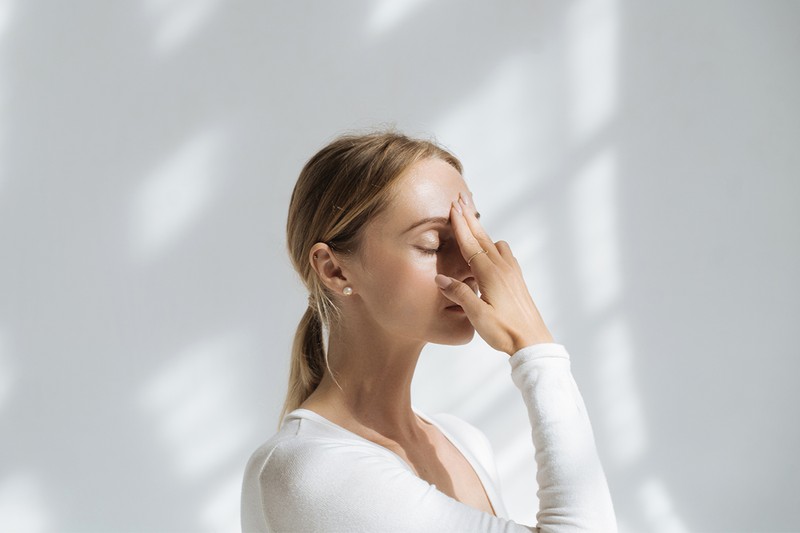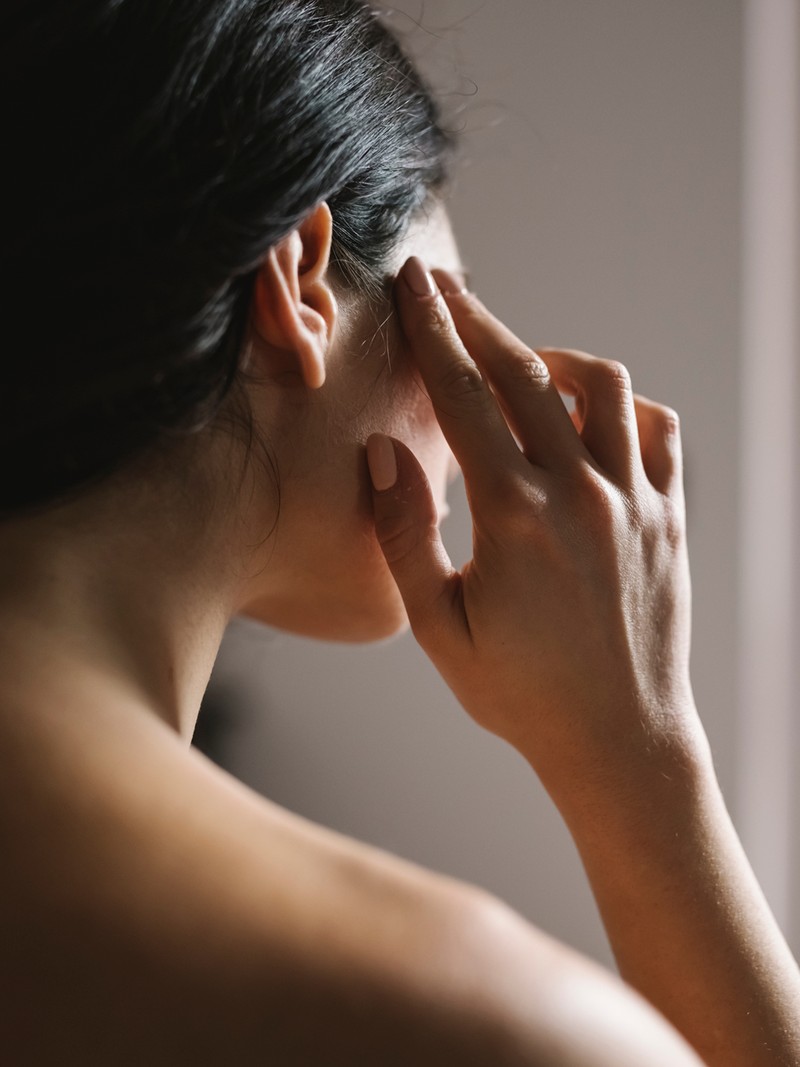A Guide To Tapping Therapy & How To Get Started
First, what exactly is tapping?
“Tapping – also known as Emotional Freedom Technique (EFT) – is a self-help tool that blends ancient Chinese Medicine and modern psychology to promote emotional and physical well-being. It's known as a psychological version of acupuncture, where you gently tap on specific points on the body while focusing on issues like stress or anxiety, to achieve healing.” – Vicki Pavitt, EFT practitioner
How is it similar to acupuncture?
“Both tapping and acupuncture are rooted in Eastern wellness principles and revolve around the concept of Qi, the life energy that flows along meridian pathways in our bodies. When blockages occur in our energy system, like acupuncture, tapping utilises specific points along these pathways to restore the flow and balance. Unlike traditional acupuncture, which uses needles, tapping involves gentle tapping on these meridian points – hence the name. This approach provides a non-invasive, yet effective, way to address energy imbalances, leading to its nickname – psychological acupuncture. Western medicine often focuses on treating specific symptoms, whereas this kind of medicine takes a more holistic approach. By tapping into our energy system, we can release blockages and promote a sense of harmony and wellbeing.” – Emma Coller, EFT practitioner & founder of Growth Pod
What are the benefits?
“Tapping is a powerful tool that sends calming messages to the brain. By tapping on specific meridian points, we signal to our brain that it’s safe to apply the brakes allowing us to rest and digest. Numerous studies across different countries have demonstrated the effectiveness of tapping in reducing stress hormones. Moreover, it has been successfully employed to treat various conditions, such as phobias, anxiety, depression, post-traumatic stress, weight loss, chronic pain, and enhancing performance. It’s a must for stress – over time, it’ll address your natural fear response and regulate stress resilience. Tapping can also enable you to confront and release issues you may have stored in your body – whether it’s phobias, anxiety, painful memories, worries or cravings. By tapping, we transition from reliving these issues to retelling them without emotional attachment, which is why it's known as the Emotional Freedom Technique (EFT). At the same time, you can also use it to create positive habits. If you want to establish a new wellbeing habit, for example, you can use it to reinforce positive affirmations to motivate you.” – Emma
How does it work?
“For the method to be effective, you first need to identify what the issue is and where it has stemmed from, which can be feelings of stress, anxiety or depression. This must be the main focus point when tapping, to ensure the best outcome. The basic technique involves focusing on the negative emotion or problem you are struggling with. Then, while putting all your mental focus on this problem, you use your fingertips to tap on the areas of your body where your meridian points are. These are around ten points, mainly focused on your face and upper body. Tapping on these points while concentrating on your negative emotion will help to restore your mind to a more relaxed, positive and balanced state.” – Kate Bithell, mental health nurse at Delamere

Can you give an example of this in practice?
“Say, for example, you’re working on an issue like dating anxiety, you’d start by rating the intensity of your anxiety, giving it a number from zero to ten, with ten being the most intense. You’d then create a statement known as a ‘set up phrase’ that validates how you feel and encourages a sense of self compassion and acceptance. For example, ‘Even though I have all of this dating anxiety, I am willing to love and accept myself’. This phrase would be said out loud three times while tapping on the side of the hand. We would then tap on the acupressure points around the face and body, while saying phrases that relate to the issue you’re working on. For example, ‘This anxiety,’ ‘it’s so heavy’, ‘I feel this anxiety in my chest’. After completing one round, we’d see if your rating had changed and repeat until the intensity of the issue has lowered. Clients often say they feel calmer and more compassionate towards themselves after tapping and often have a different perspective on things they’ve felt stuck on. It’s a feeling of emotional safety and empowerment.” – Vicki
How quickly will you see results?
“If your intention is to calm the nervous system, just a few rounds of tapping will bring significant benefits. However, if you’re using tapping to release stored emotions, it may take longer. Some may find that working with tapping practitioners over multiple sessions is helpful, especially for complex or deeply rooted issues. Its adaptability makes it a versatile technique, offering both quick relief for certain concerns and a deeper healing journey for others.” – Emma
What does the science say?
“Several large-scale studies show that tapping is an effective form of therapy, especially when it comes to treating anxiety and stress. Studies show it’s linked to reduced levels of cortisol, our main stress hormone, and others say it’s an effective way to treat anxiety and specific phobias.” – Vicki
How can you get started?
“A quick Google search will bring up endless free videos showing you how to tap. Once you grasp the tapping points and the process, you're good to go. The Tapping Solution app – founded by two of the world leaders in this field, Jess and Nick Ortner – is also great. Whilst it’s a paid app, there are free tapping guides and meditations which can be accessed and give you the basics of tapping.” – Emma
“If you have a diagnosed mental health condition – like anxiety or depression – consider speaking to a specialist or therapist who can guide you on whether tapping is a technique that would help you. At Delamere, it’s a technique we recommend to clients struggling with mental health issues, especially as a result of addiction.” – Kate
The bottom line?
“If you’re sceptical about trying tapping, keep an open mind. You may feel silly doing it at first, but it’s backed by hundreds of studies that show it has a direct impact on many mental health and wellbeing issues in a variety of contexts. Plus, it’s accessible to anyone willing to give it a try. Once you master the basics, its simplicity and ease of use make it a tool that can be used by anyone. From my experience with clients, there’s nothing to lose by experimenting with tapping and so much to be gained.” – Emma
For more from the experts visit Growth-Pod.co.uk, VickiPavitt.com & Delamere.com.
DISCLAIMER: Features published by SheerLuxe are not intended to treat, diagnose, cure or prevent any disease. Always seek the advice of your GP or another qualified healthcare provider for any questions you have regarding a medical condition, and before undertaking any diet, exercise or other health-related programme.
DISCLAIMER: We endeavour to always credit the correct original source of every image we use. If you think a credit may be incorrect, please contact us at info@sheerluxe.com.


